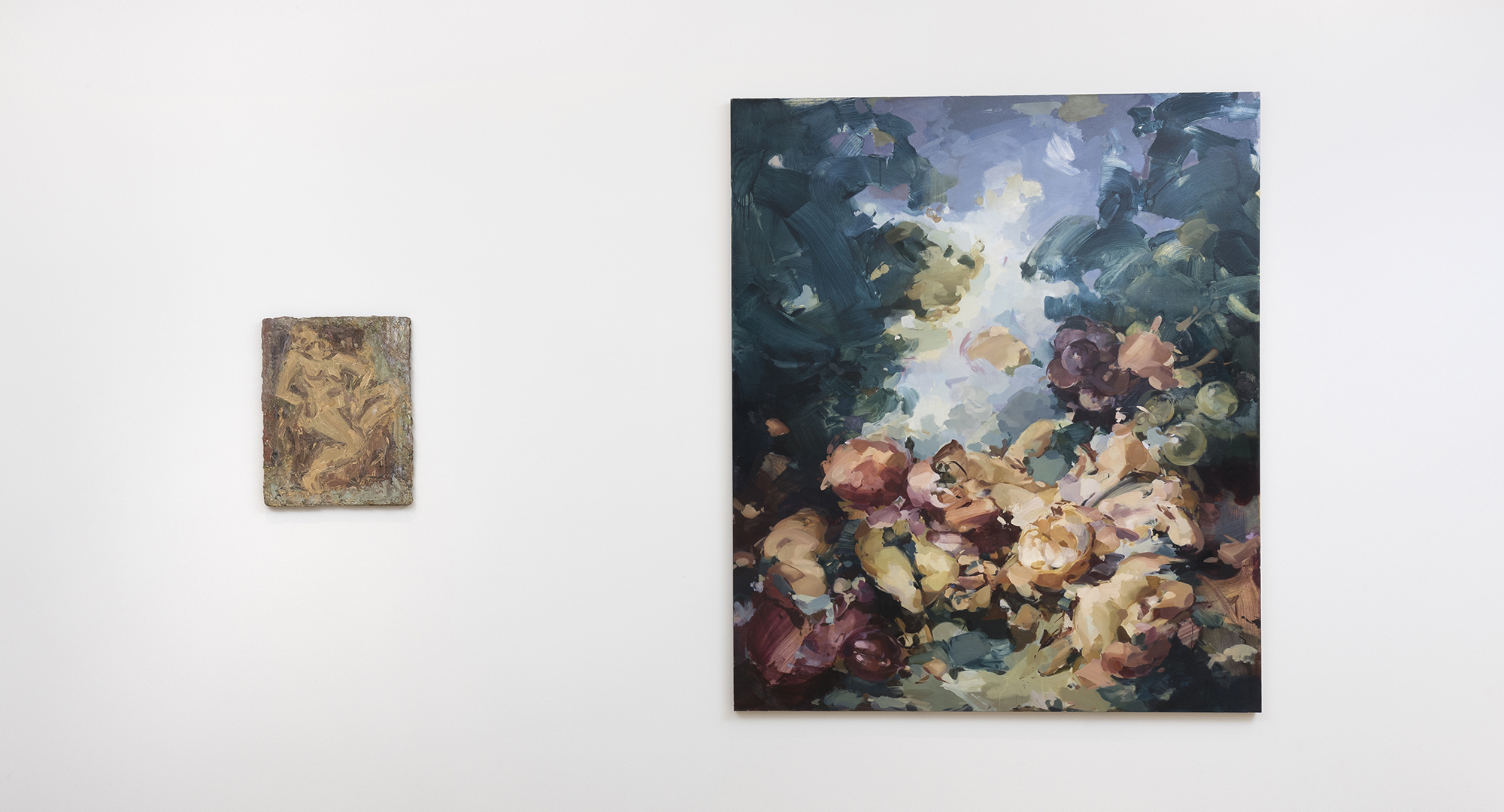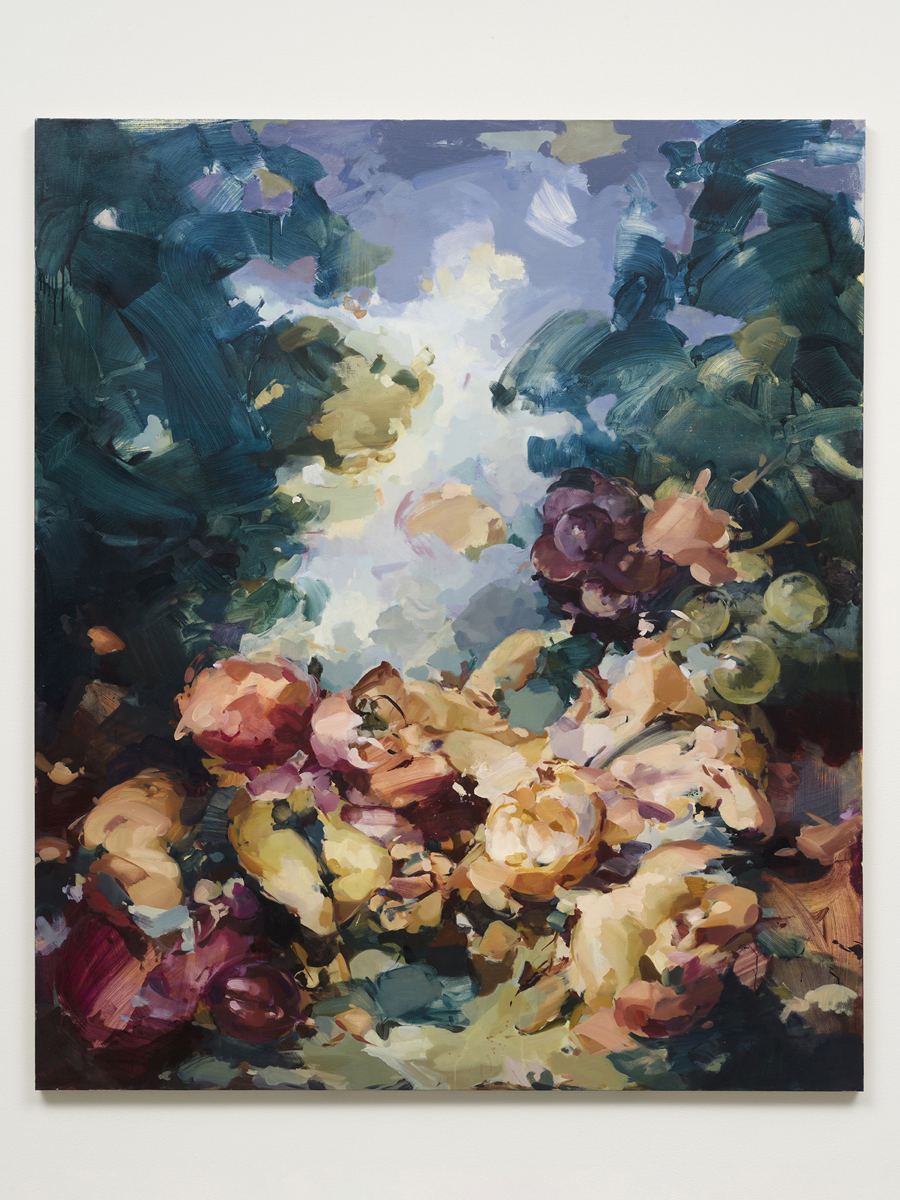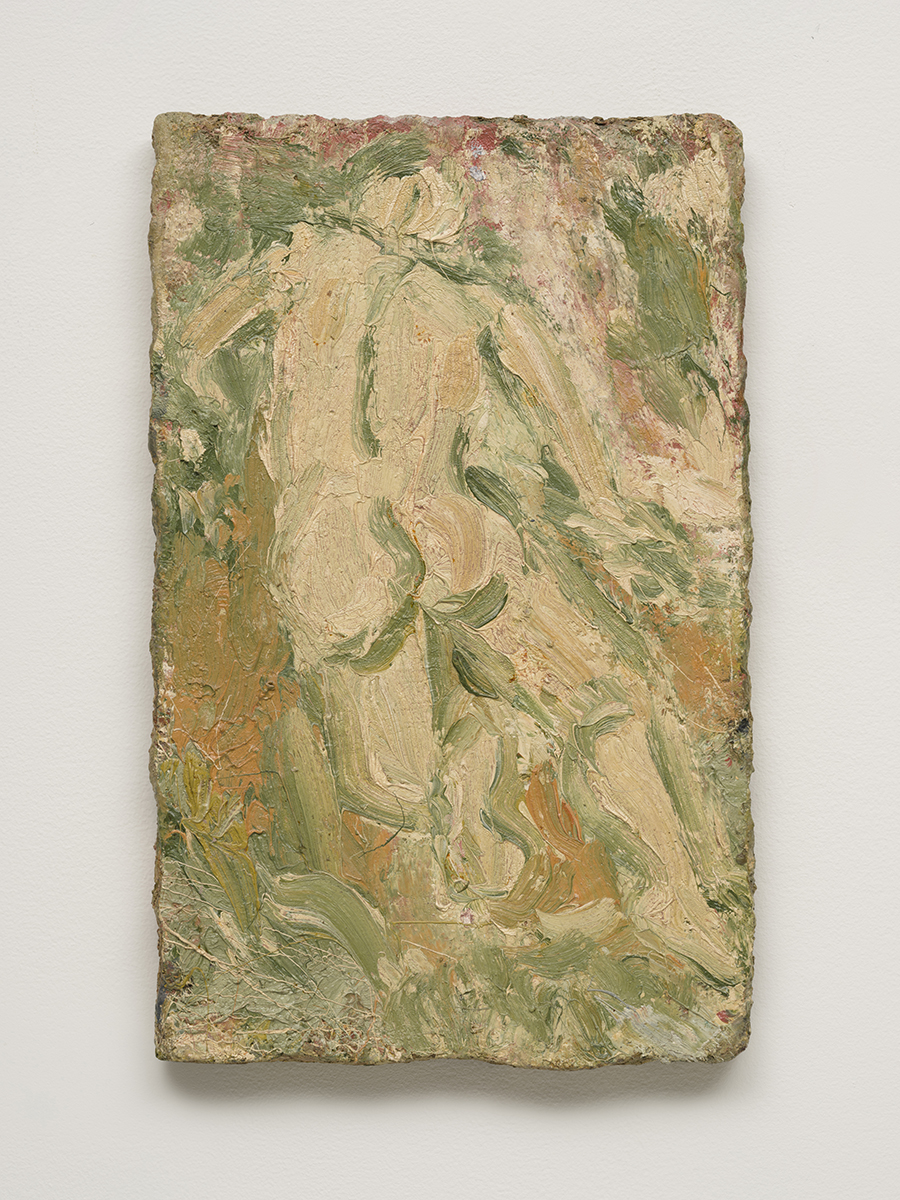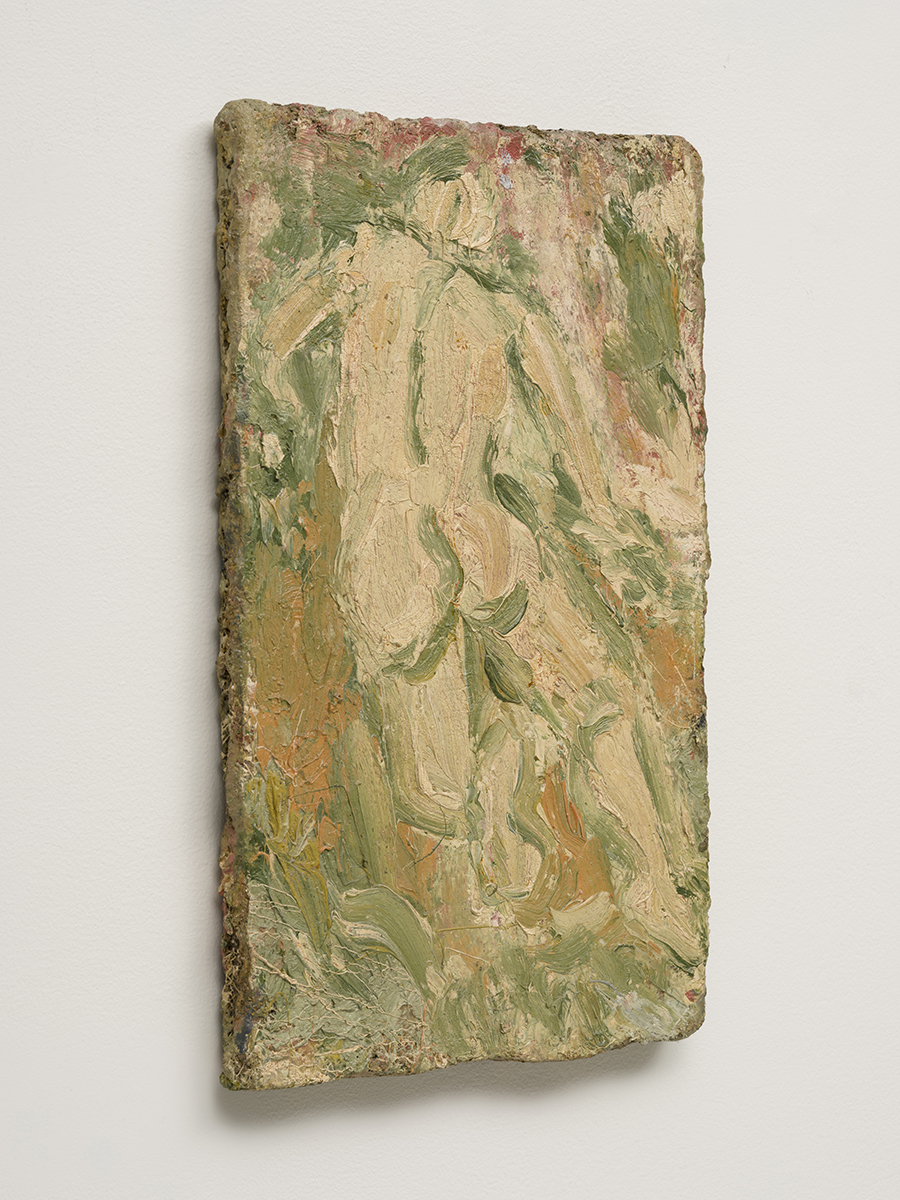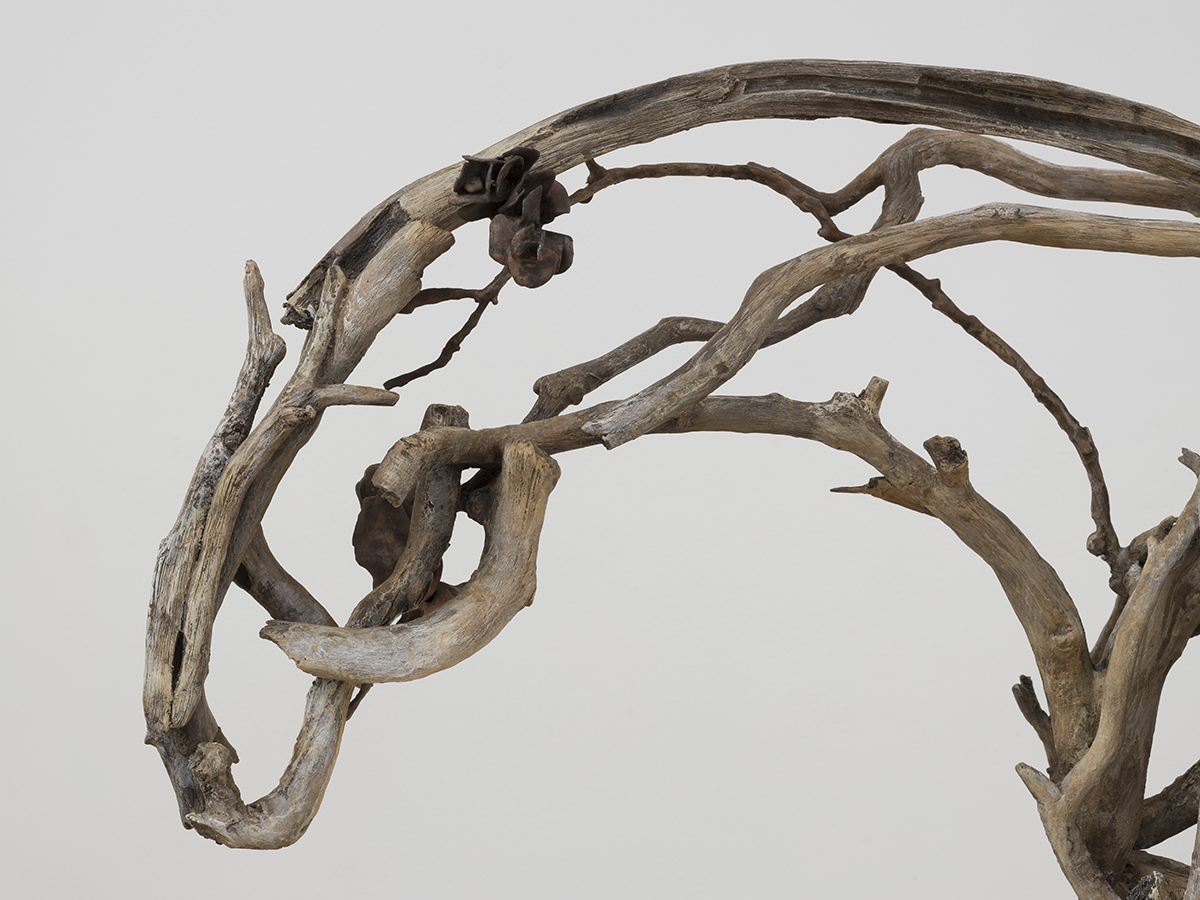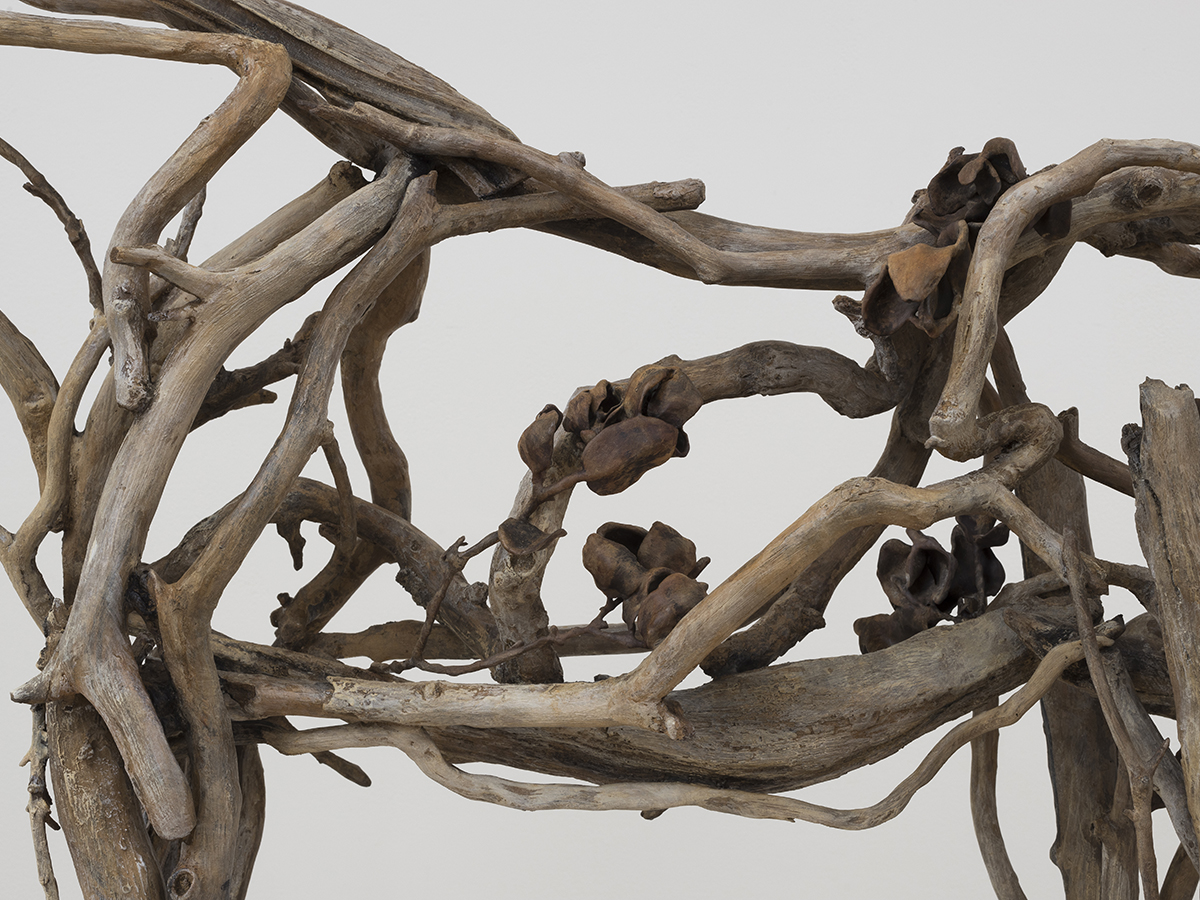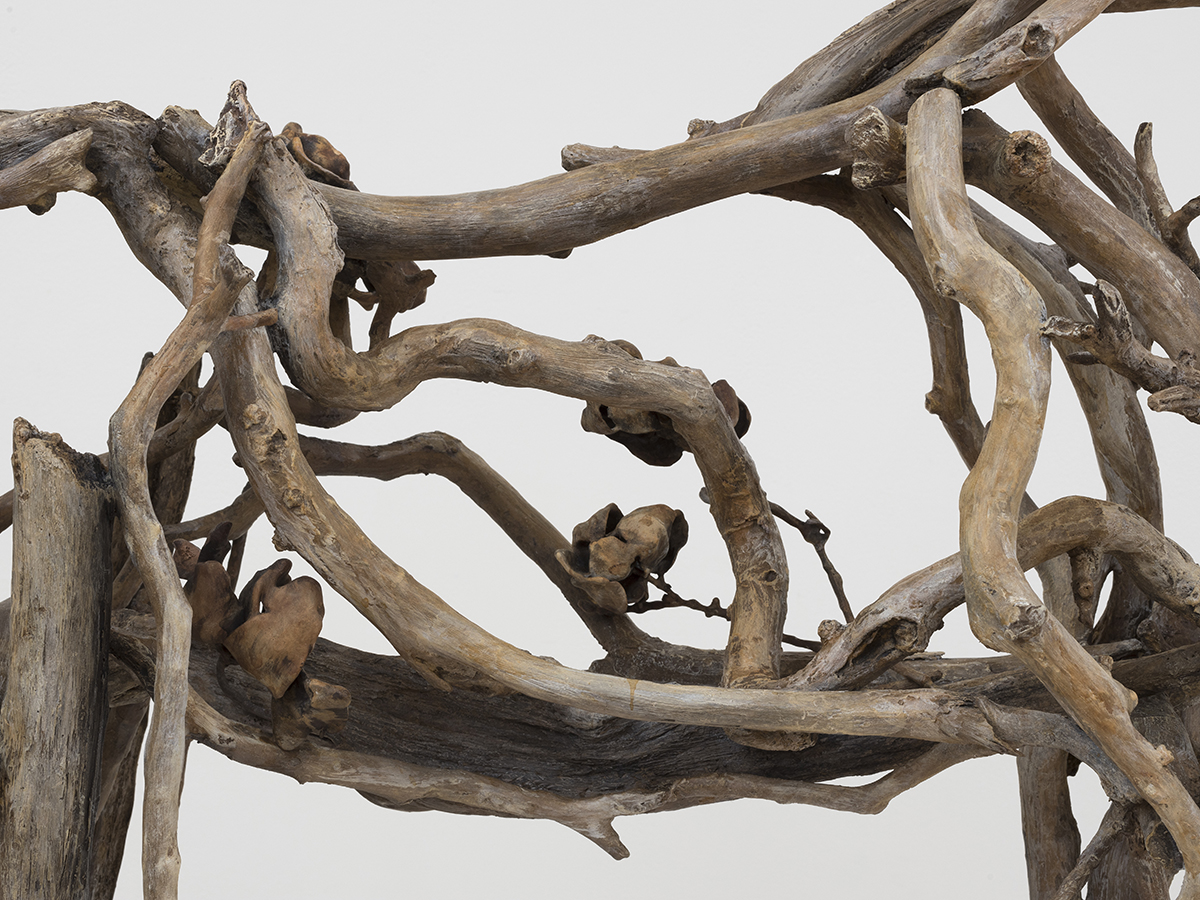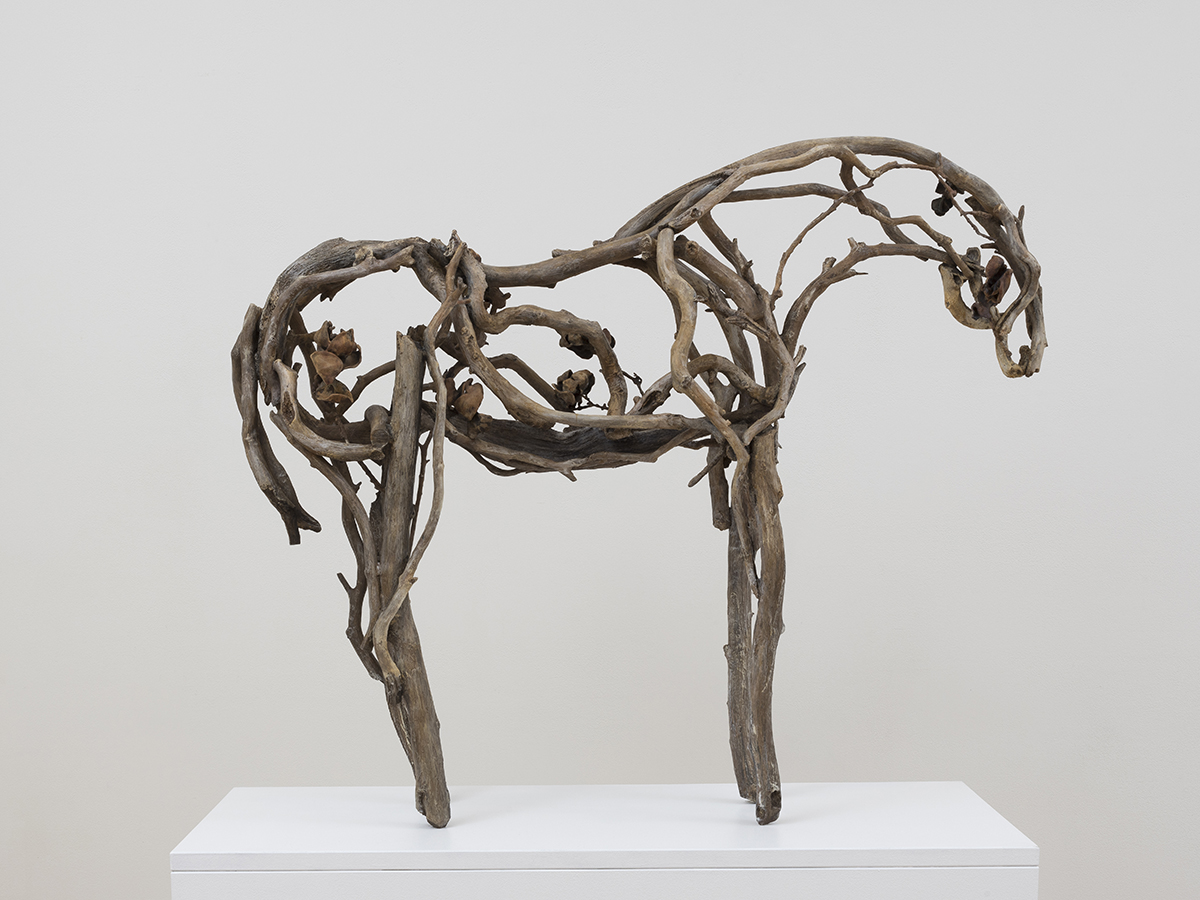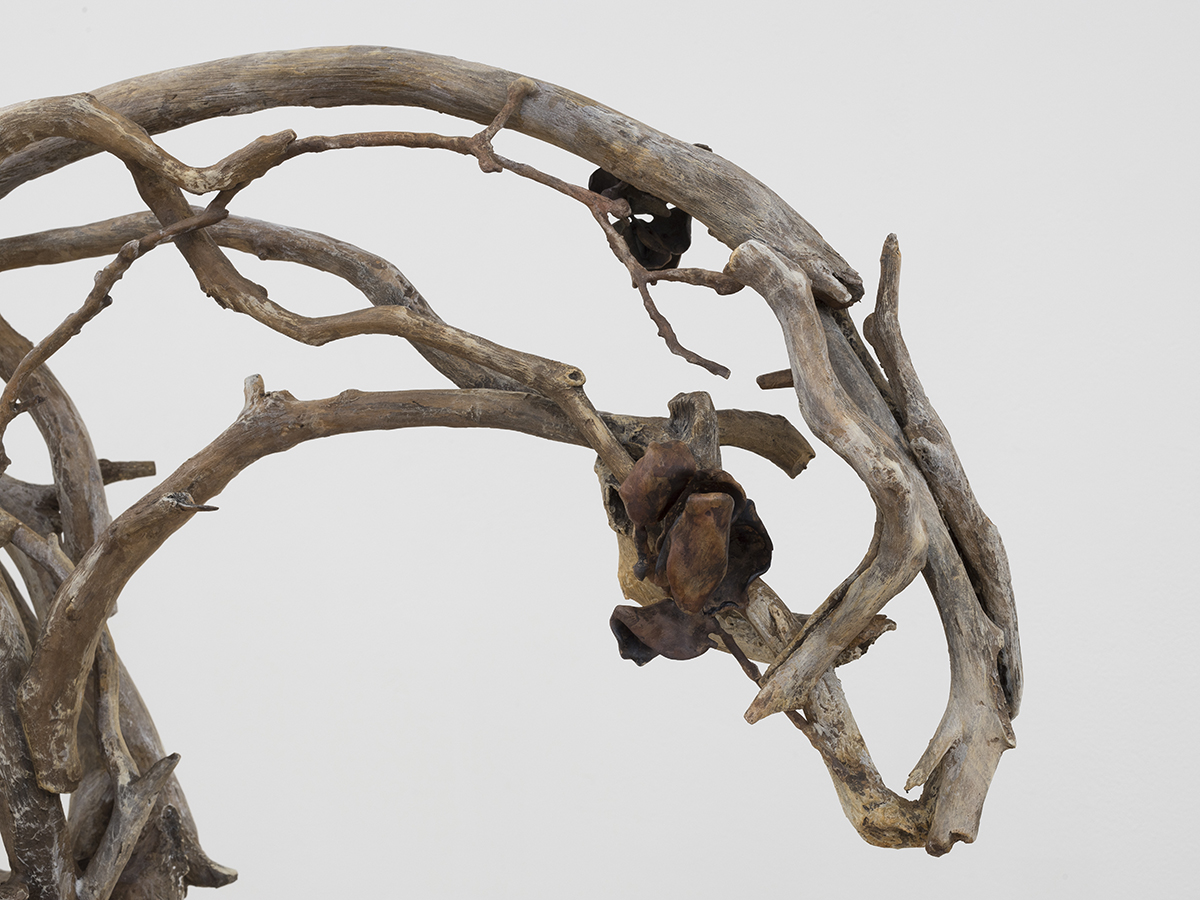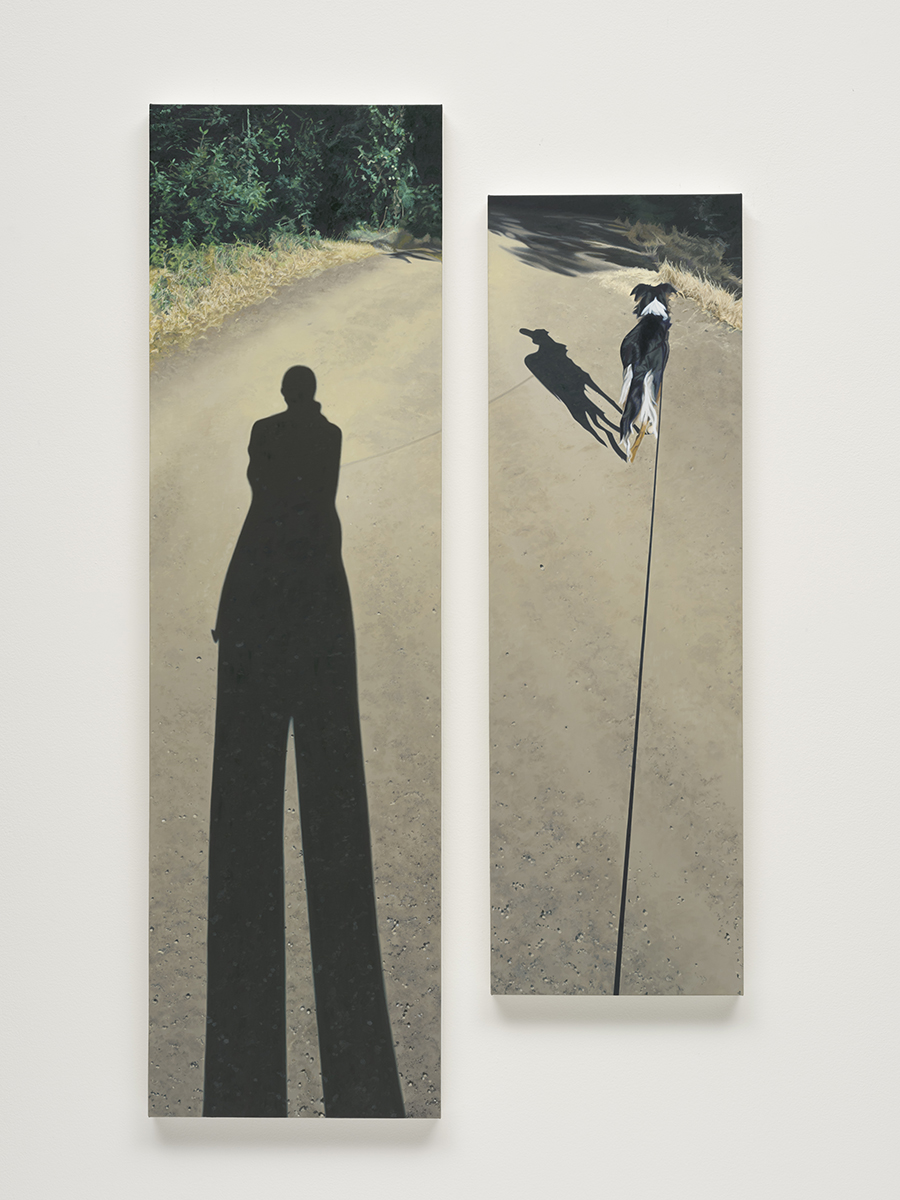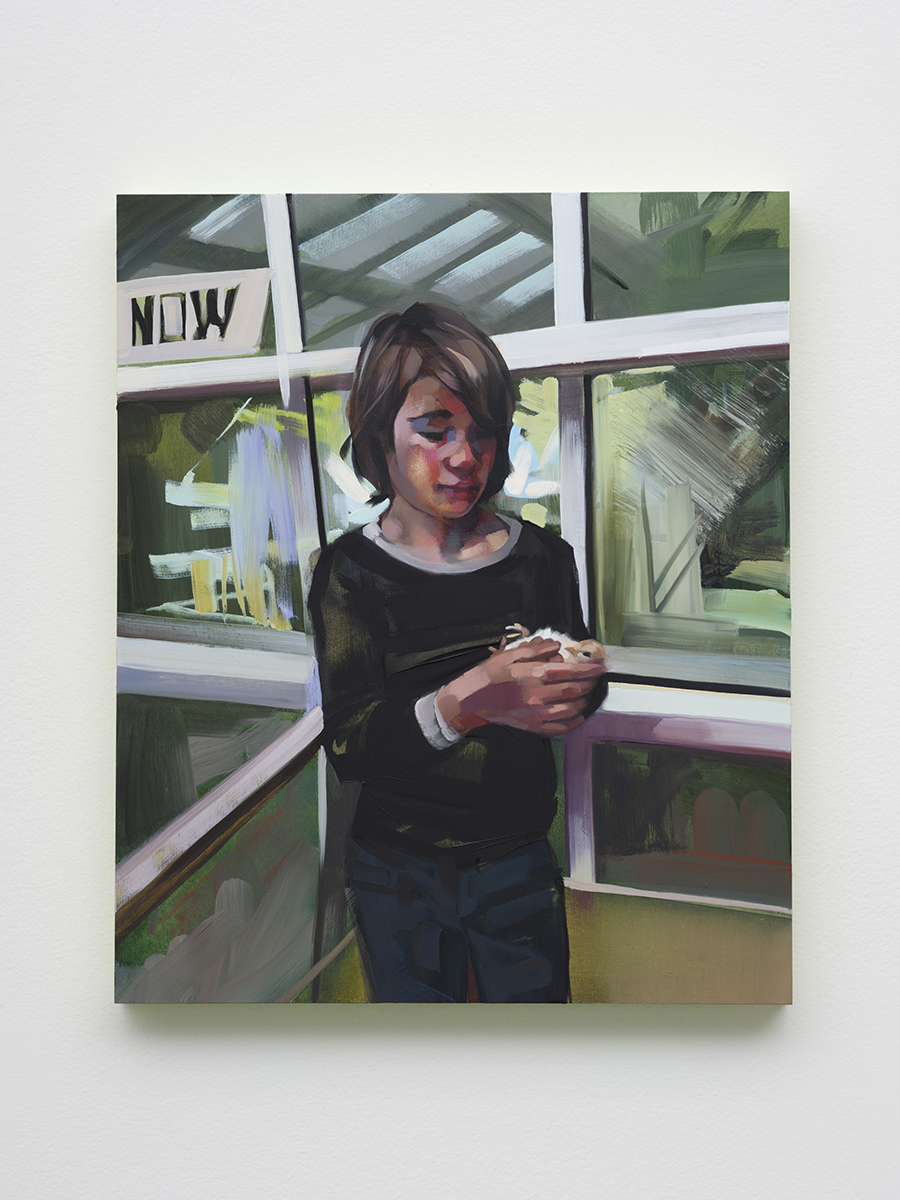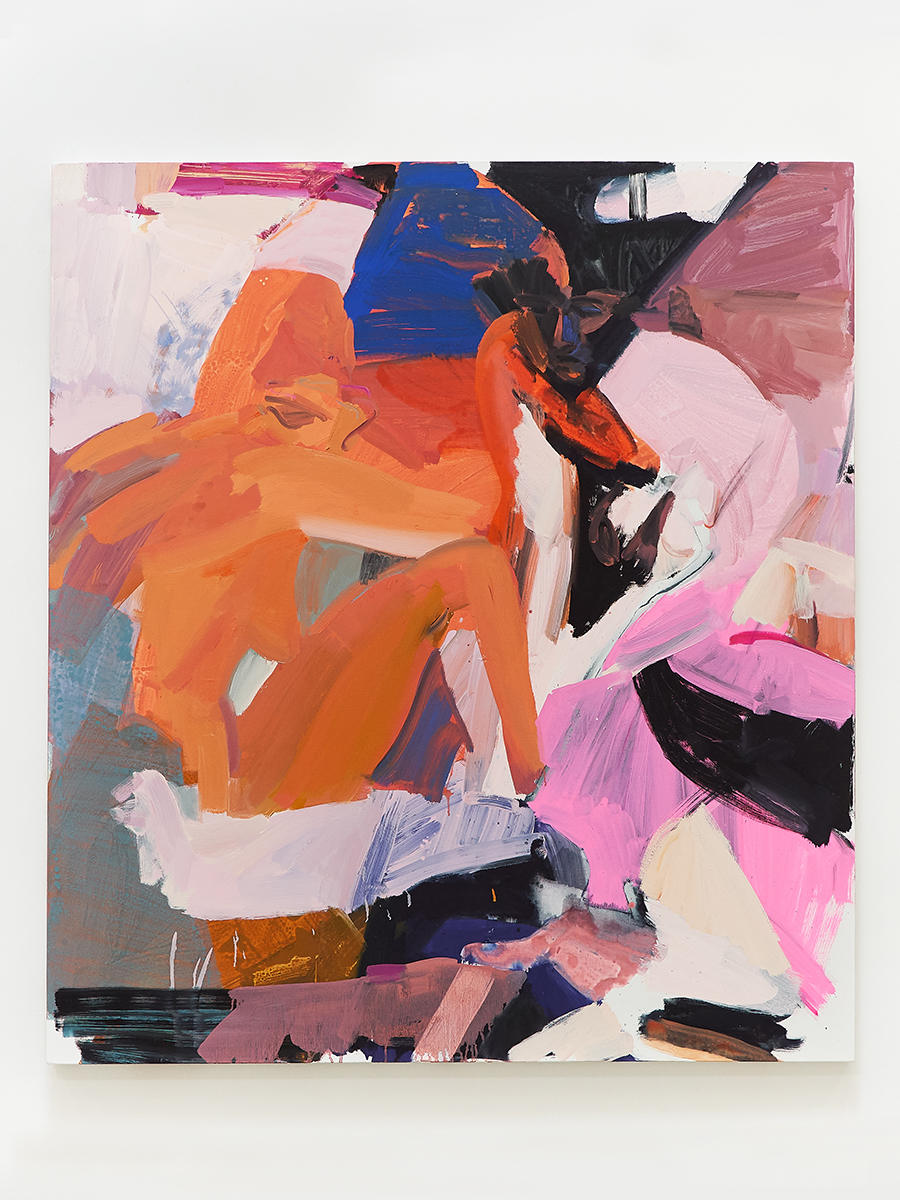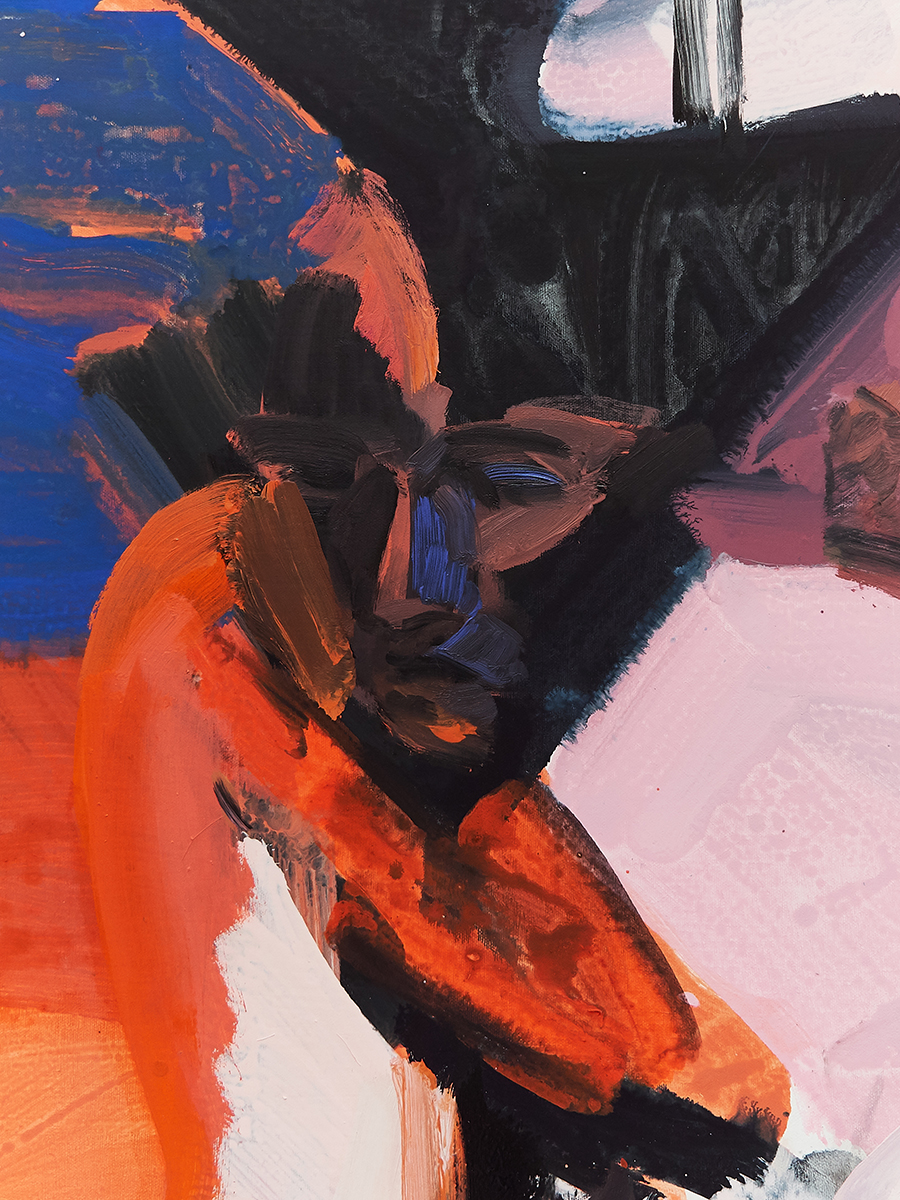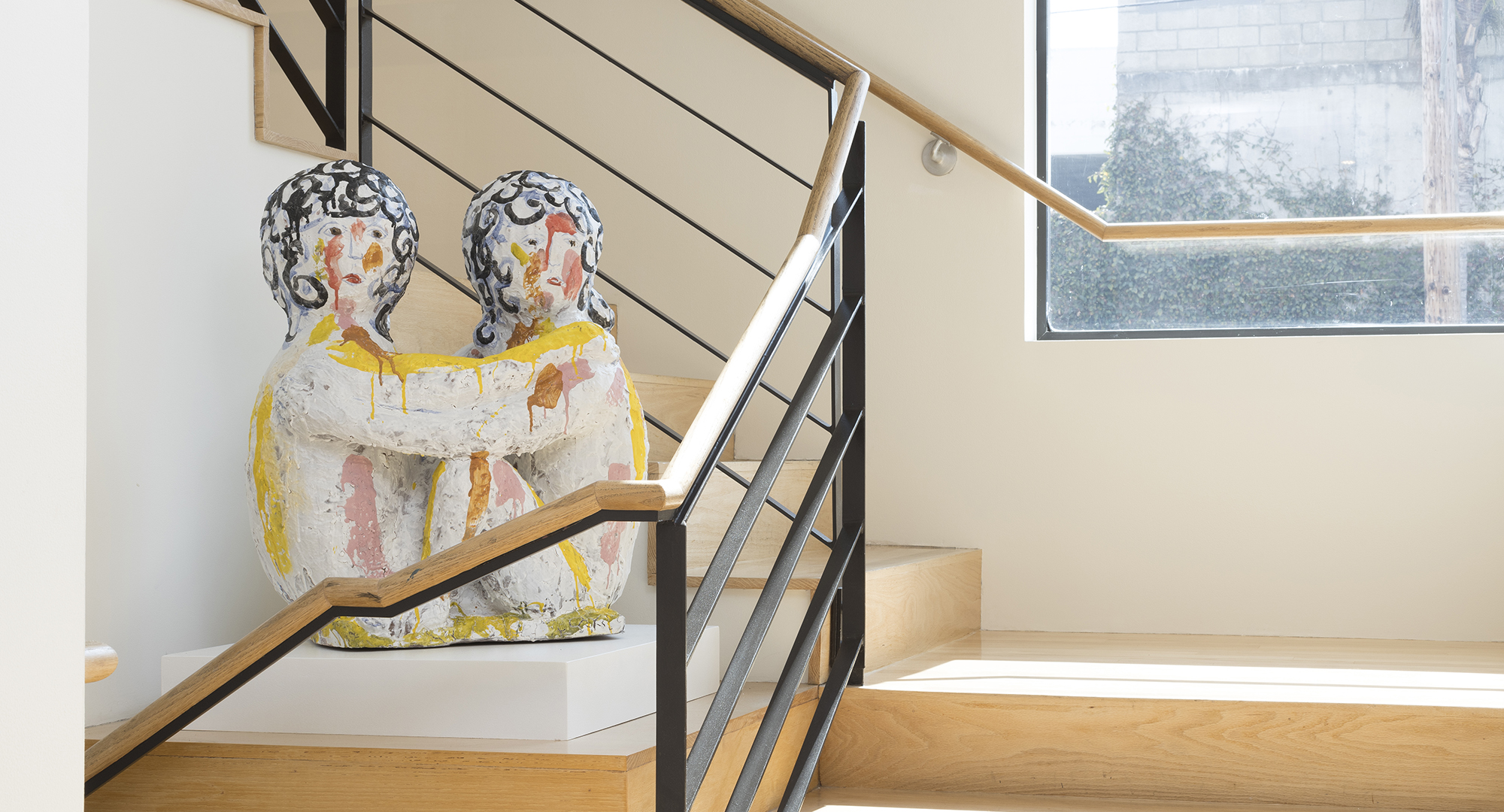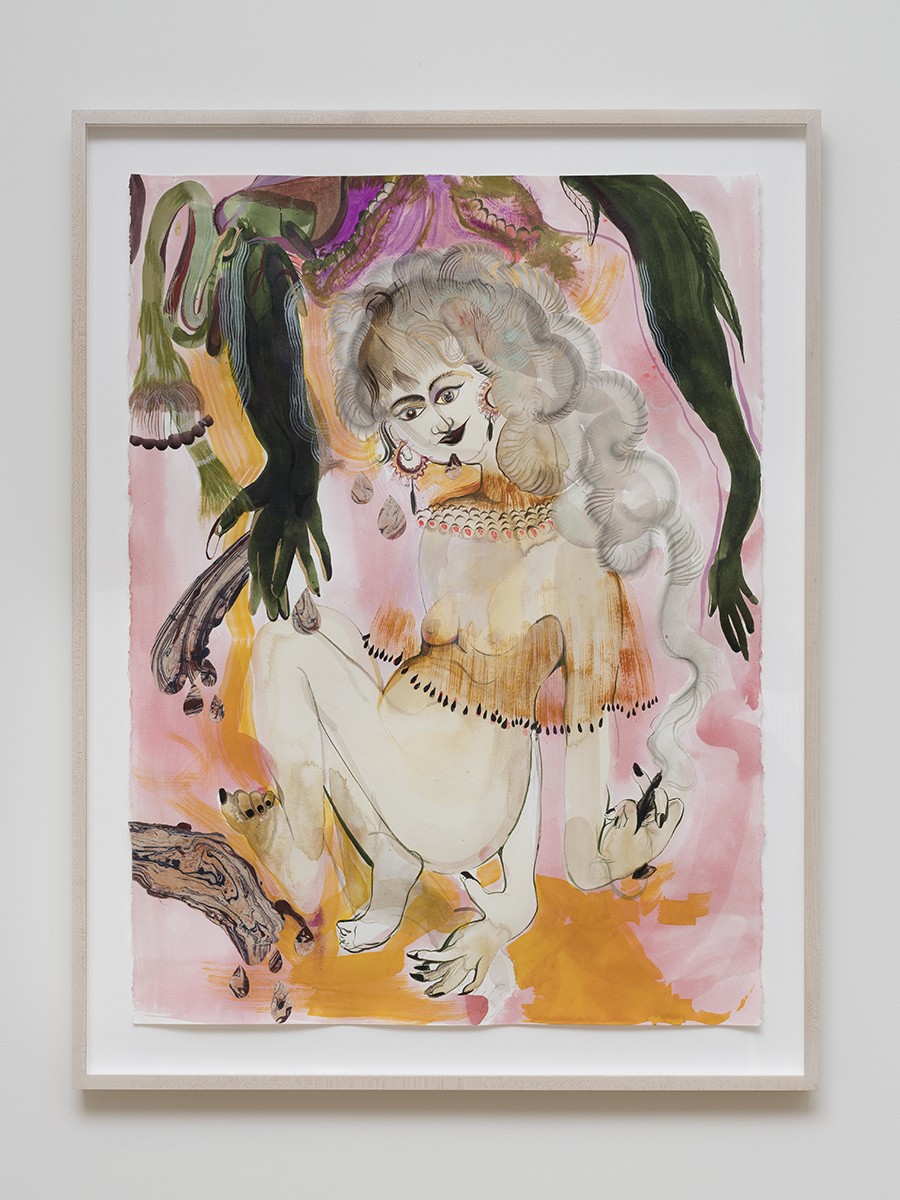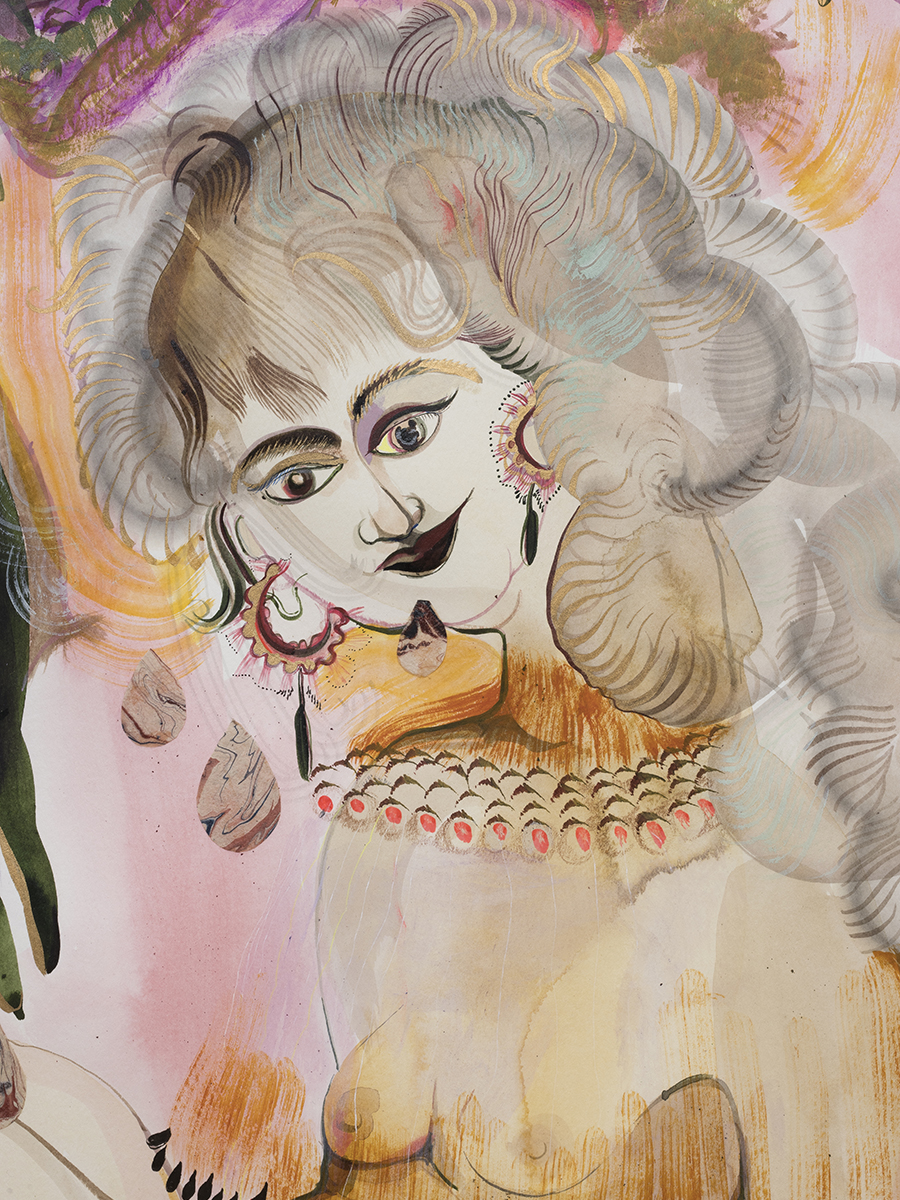L.A. LOUVER
CELEBRATES 45 YEARS
WITH 45 ARTISTS
20 OCTOBER 2020—30 JANUARY 2021
45 in Focus:
The Figure
This edition of 45 in Focus features nine artists working with the figure, expressed abstractly or realistically, in two or three dimensions. The figure is many things in these works. Figures tell a story of personal or cultural history in the works of Rina Banerjee and Rebecca Campbell. They serve as a bridge to art history’s long traditions, whether directly, as in Flora Yukhnovich’s vibrant riffs on 18th century painting or Leon Kossoff’s modern portraiture, or indirectly, seen in Matt Wedel’s tender ceramics. Artists turn to the figure for its deep connection to lived experience, but also as a beacon. Sarah Awad, Deborah Butterfield, and Dave McDermott all toe the line between figuration and abstraction, pulling their figures from the swirl of creation with deft hands. The figure also invites the viewer to inhabit the work, as Sandra Mendelsohn Rubin so subtly implies here.
Installation view
45 at 45: L.A. Louver Celebrates 45 Years with 45 Artists
(left to right: Leon Kossoff and Flora Yukhnovich)
Flora Yukhnovich made this work after looking at the 18th century Fête Galante paintings of Jean-Baptiste Pater and Nicolas Lancret, thinking about the depiction and roles of women. While in the source paintings women and their sumptuous clothes are offered up for what we now recognize as the male gaze, Yukhnovich celebrates female sensuality for its own sake. The title of the painting comes from a line in a Nicki Minaj song describing the shape of the singer's body. Yukhnovich further reclaims this conflation of women’s bodies with food by using fruit imagery to suggest experience and power rather than objectification.
Flora Yuknovich
Thicker Than Peanut Butter, 2020
oil on linen
78 3/4 x 66 7/8 in.
(200 x 170 cm)
Sold
Inquire
Leon Kossoff’s two nudes luxuriate in swaths of thick impasto. One seated and one seen from behind, both figures are captured relaxed, held by their chair but also by the artist’s keen gaze. Kossoff seems to pull bodies out of the surrounding abstraction, their edges emerging from thick swirls of paint. Though they are loosely executed, the artist evokes the sweeping elegance of a broad back and full bottom, and the slack-faced repose of sleep or exhaustion with the sparest detail.
The horse is an essential form for Deborah Butterfield. Constructed initially from found wood, these are then cast in bronze and meticulously patinated to mimic the original material. The artist poetically captures the spirit of her subject, reflecting a deep connection between flora and fauna, human and animal. The title of this work, Kealoha, means “beloved one” in Hawaiian. Butterfield divides her time between a studio in Hawaii and farm in Montana, collecting found materials to use in her sculptures in both locations. Here, delicate bronze flowers adorn the body of the horse, reflecting the beauty and strength of these majestic mares.
Deborah Butterfield
Keoloha, 2020
cast bronze
36 x 46 x 12 in.
(91.2 x 116.8 x 30.5 cm)
Sold
Inquire
Sandra Mendelsohn Rubin works from photographs to achieve meticulously rendered paintings. This is unique in her oeuvre, in that the composition stretches over two panels. On the Road casts the viewer as subject, as the figure’s long afternoon shadow stretches from the bottom edge of the surface. The two panels are connected by the delicate shadow of a leash that spans the divide as the dog eagerly forges ahead. Watch a short video where the artist describes the process behind the work.
Sandra Mendelsohn Rubin
On the Road, 2020
oil on polyester
left panel: 57 x 16 1/2 in.
(114.8 x 41.9 cm)
right panel: 45 x 14 1/4 in.
(114.3 x 36.2 cm)
Inquire
Rebecca Campbell’s paintings draw from personal history, resulting in poignant compositions that collapse time and narrative and reveal the unknown side of family tales. During the difficult span of our pandemic year, Campbell has turned to more intimate, immediate subjects, painting her own nuclear family and surroundings. This work features one of her young children holding a small baby chick. The tenderness of the moment shines through in the relaxed pose of the figure, but also in the artist’s precise brushstrokes and unexpected color.
Sarah Awad’s figures, on the other hand, seem to emerge from abstraction, their indeterminate borders fading into rich areas of worked color while at the same time pushing gently forward, insistently holding the viewer’s eye. The delight of this play between bodies and pure colors is at the heart of Awad’s work. The artist works intuitively, remaking the traditional nude into something wholly contemporary.
Sarah Awad
Her/Not Her, 2020
oil and vinyl on canvas
54 x 48 in.
(137.2 x 121.9 cm)
Inquire
Dave McDermott blends classicism and abstraction with Woman in Garden, evoking a tradition of the plein air female nude that goes back millenia. She is Artemis surprised by Actaeon and Bathsheeba spied on by King David, but also Manet’s coy picnicer. McDermott heightens the drama with a surface of gold leaf and highly gestural paint application, which stands in contrast to the solid outline of the figure. She points to the right but turns to the left, perhaps gesturing to another figure just outside the frame.
Dave McDermott
Woman in Garden, 2020
oil, 23k gold and flashe on panel
62 3/8 x 48 in.
(158.4 x 121.9 cm)
Sold
Inquire
In another example of warm, abstracted color, Matt Wedel's Wonderers uses the figure to gently playful effect. The two seated figures hold each other close at shoulder and hip, but turn their faces towards the viewer, as if she has interrupted some private game. The artist built these foms from terracotta, a nod to his interest in early Italian Renaissance ceramics. Their spare faces and swirling hair closely relate to other Wedel works both massive and miniscule, as the artist is constantly experimenting and pushing his chosen medium to its limits.
Matt Wedel
Wonderers, 2020
glazed terracotta
28 x 23 x 16 in.
(71.1 x 58.4 x 40.6 cm)
Inquire
The continued migration of both people and goods via the vast interconnections of colonialism fuels Rina Banerjee’s works. Here, a nude woman, thinly veiled in gauze, exists in a dreamlike space, and is either embraced or menaced by deep green hands from above. The title references the vapours of tobacco and opium, two crops that have historically fueled frenzied trade and that continue to hold sway on the global market. Banerjee uses hints of traditional Southeast Asian figuration, with her contorted figure, abstracted hair, and heavily lined facial features, a nod to her family's Indian roots. But as a near-lifelong New Yorker, Banerjee is herself an illustration of the fluidity of culture in the modern world.
Rina Banerjee
Blame Vapors humid without tobacco, opium, etc. and in 14 hours of labor to starch out from Asia, Africa things fit for Queen, spice, furniture, silks made to cloak, cape cultures West, to make a nice nest for English fish, gold chips, ships in the mist would eat bread in ruthless houses to fix commerce, extend it to inhuman reach., 2019
acrylic, ink and collage on paper
30 x 22 3/8 in.
(76.2 x 56.8 cm)
Inquire
45 at 45
L.A. Louver Celebrates 45 Years with 45 Artists
20 October 2020 – 30 January 2021
Sales inquiries: sales@lalouver.com
Press inquiries: press@lalouver.com
310.822.4955 info@lalouver.com
Hours: Mon - Fri, 10 - 6 Summer hours: Mon - Fri, 10 - 6 Hours: Tuesday - Saturday, 10am - 6pm

